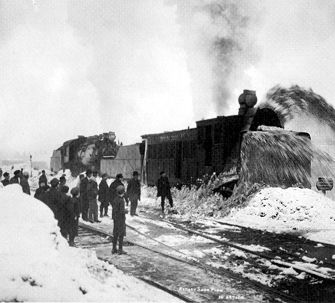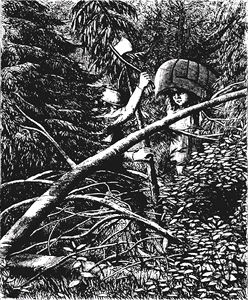Browse "Transportation"
-
Article
Newfie Bullet
An affectionate but ironic name informally applied to the transinsular Newfoundland passenger railway in its latter days.
"https://development.thecanadianencyclopedia.ca/images/tce_placeholder.jpg?v=e9dca980c9bdb3aa11e832e7ea94f5d9" // resources/views/front/categories/view.blade.php
https://development.thecanadianencyclopedia.ca/images/tce_placeholder.jpg?v=e9dca980c9bdb3aa11e832e7ea94f5d9
-
Article
Noorduyn Norseman
The first bush plane of all-Canadian origin, Noorduyn Norseman was designed after consultations with bush pilots and built in Montréal by R.B.C. (Bob) Noorduyn. It was a rugged, single-engined craft, with the large
"https://d2ttikhf7xbzbs.cloudfront.net/media/media/b872791e-5ba9-444f-8337-4b39e3c73995.jpg" // resources/views/front/categories/view.blade.php
https://d2ttikhf7xbzbs.cloudfront.net/media/media/b872791e-5ba9-444f-8337-4b39e3c73995.jpg
-
Article
Noronic
Noronic was a Great Lakes steamer of the Canada Steamship Lines Ltd, built at Port Arthur, Ontario, in 1913. It was consumed by fire in Toronto at dockside on 17 September 1949. There was a tragic delay in summoning the fire department and 119 people died.
"https://development.thecanadianencyclopedia.ca/images/tce_placeholder.jpg?v=e9dca980c9bdb3aa11e832e7ea94f5d9" // resources/views/front/categories/view.blade.php
https://development.thecanadianencyclopedia.ca/images/tce_placeholder.jpg?v=e9dca980c9bdb3aa11e832e7ea94f5d9
-
Article
Northern Railway of Canada
The railway was designed to link the 3 lakes for which it was originally named - the Ontario, Simcoe and Huron Railway. It opened in May 1853 when the locomotive Toronto (made in Toronto) hauled the first steam train in present-day Ontario from Toronto to Machell's Corners (present-day Aurora).
"https://development.thecanadianencyclopedia.ca/images/tce_placeholder.jpg?v=e9dca980c9bdb3aa11e832e7ea94f5d9" // resources/views/front/categories/view.blade.php
https://development.thecanadianencyclopedia.ca/images/tce_placeholder.jpg?v=e9dca980c9bdb3aa11e832e7ea94f5d9
-
Article
Nova Scotia Nautical Institute
The Nova Scotia Nautical Institute was an institute for seamanship training founded in 1872. It was common in England and Canada, which followed England in marine matters, to have people called "crammers" to assist mariners to pass their examinations, following apprenticeship on board ship.
"https://development.thecanadianencyclopedia.ca/images/tce_placeholder.jpg?v=e9dca980c9bdb3aa11e832e7ea94f5d9" // resources/views/front/categories/view.blade.php
https://development.thecanadianencyclopedia.ca/images/tce_placeholder.jpg?v=e9dca980c9bdb3aa11e832e7ea94f5d9
-
Macleans
Plane Crash in Fredericton
This article was originally published in Maclean’s magazine on December 29, 1997. Partner content is not updated. Like thousands of other Canadians last week, Krista Kitchen was headed home for the holidays. Flying into Fredericton from Toronto aboard Air Canada Flight 646, the 23-year-old University of Western Ontario student was looking forward to Christmas with family and friends.
"https://development.thecanadianencyclopedia.ca/images/tce_placeholder.jpg?v=e9dca980c9bdb3aa11e832e7ea94f5d9" // resources/views/front/categories/view.blade.php
https://development.thecanadianencyclopedia.ca/images/tce_placeholder.jpg?v=e9dca980c9bdb3aa11e832e7ea94f5d9
-
Macleans
Pumped to find another way
With Keystone XL and the Northern Gateway mired in controversy, the industry turns to Plan BThis article was originally published in Maclean's Magazine on September 2, 2013
"https://development.thecanadianencyclopedia.ca/images/tce_placeholder.jpg?v=e9dca980c9bdb3aa11e832e7ea94f5d9" // resources/views/front/categories/view.blade.php
https://development.thecanadianencyclopedia.ca/images/tce_placeholder.jpg?v=e9dca980c9bdb3aa11e832e7ea94f5d9
-
Article
Queen Elizabeth Way
Queen Elizabeth Way, connecting Toronto with Niagara Falls and Fort Erie, Ont, was Canada's first 4-lane, controlled-access superhighway.
"https://development.thecanadianencyclopedia.ca/images/tce_placeholder.jpg?v=e9dca980c9bdb3aa11e832e7ea94f5d9" // resources/views/front/categories/view.blade.php
https://development.thecanadianencyclopedia.ca/images/tce_placeholder.jpg?v=e9dca980c9bdb3aa11e832e7ea94f5d9
-
Article
Raft
Once the spring timber drive reached the main rivers, the timber was assembled into rafts for transportation to the shipping port.
"https://d2ttikhf7xbzbs.cloudfront.net/media/media/80691fa6-9b5a-4c82-a51d-0aaadaf68f77.jpg" // resources/views/front/categories/view.blade.php
https://d2ttikhf7xbzbs.cloudfront.net/media/media/80691fa6-9b5a-4c82-a51d-0aaadaf68f77.jpg
-
Article
Railway Safety
One of the most famous railway accidents in recent years was the 1979 "Mississauga Derailment". There were no injuries, but the accident involved leaking chlorine cars and forced the evacuation of 250 000 nearby residents.
"https://d2ttikhf7xbzbs.cloudfront.net/media/media/b70a9bd3-5b56-4fc6-8a47-568e3ca145ca.jpg" // resources/views/front/categories/view.blade.php
https://d2ttikhf7xbzbs.cloudfront.net/media/media/b70a9bd3-5b56-4fc6-8a47-568e3ca145ca.jpg
-
Article
Roads and Highways
Canada's first highways were the rivers and lakes used by Indigenous peoples, travelling by canoe in summer and following the frozen waterways in winter. (See also Birchbark Canoe; Dugout Canoe.) The water network was so practical that explorers, settlers and soldiers followed the example of the Indigenous peoples. (See also Coureurs des bois; Voyageurs.) To a greater extent than most other countries, Canada depends for its social, economic and political life on efficient communication and transportation. (See also Economy; Politics.)
"https://d2ttikhf7xbzbs.cloudfront.net/media/media/a2f5cb61-ed14-46ed-9cea-f9bdc1ee18bd.jpg" // resources/views/front/categories/view.blade.php
https://d2ttikhf7xbzbs.cloudfront.net/media/media/a2f5cb61-ed14-46ed-9cea-f9bdc1ee18bd.jpg
-
Article
Royal Commission on Transportation
The Royal Commission on Transportation (MacPherson Commission) was appointed by the federal government (1959) to investigate transportation policy, particularly freight-rate inequities.
"https://development.thecanadianencyclopedia.ca/images/tce_placeholder.jpg?v=e9dca980c9bdb3aa11e832e7ea94f5d9" // resources/views/front/categories/view.blade.php
https://development.thecanadianencyclopedia.ca/images/tce_placeholder.jpg?v=e9dca980c9bdb3aa11e832e7ea94f5d9
-
Article
Sailing Ships
In Canada's age of sail (1800-75) over 4000 ships, each exceeding 500 tons burthen, were built in Canada. In 1878 Canadian-registered ships numbered 7196 and totalled 1 333 015 tons. Among the nations, Canada stood fourth in seagoing tonnage.
"https://d2ttikhf7xbzbs.cloudfront.net/media/media/51e2696b-a413-49ec-95f7-5c8ae1e99b18.jpg" // resources/views/front/categories/view.blade.php
https://d2ttikhf7xbzbs.cloudfront.net/media/media/51e2696b-a413-49ec-95f7-5c8ae1e99b18.jpg
-
Article
Samson
Samson, first locomotive in North America to burn coal and the first to run over all-iron rails. Built in New Shildon, England, it was shipped to Pictou, NS, to haul coal from the Albion Mines 9.6 km over a tramway to Dunbar Point on Pictou Harbour.
"https://development.thecanadianencyclopedia.ca/images/tce_placeholder.jpg?v=e9dca980c9bdb3aa11e832e7ea94f5d9" // resources/views/front/categories/view.blade.php
https://development.thecanadianencyclopedia.ca/images/tce_placeholder.jpg?v=e9dca980c9bdb3aa11e832e7ea94f5d9
-
Article
Shipbuilding and Ship Repair
The first SAILING SHIPS built in what is now Canada were 2 small craft launched at PORT-ROYAL, Acadia, by François Gravé du Pont in 1606. The first recorded seagoing vessel, Galiote, was built in NEW FRANCE in 1663.
"https://d2ttikhf7xbzbs.cloudfront.net/media/media/4c950e25-eef1-4b40-86ed-669724e4e833.jpg" // resources/views/front/categories/view.blade.php
https://d2ttikhf7xbzbs.cloudfront.net/media/media/4c950e25-eef1-4b40-86ed-669724e4e833.jpg
